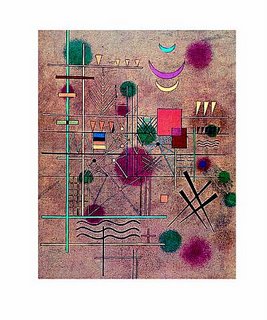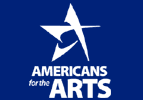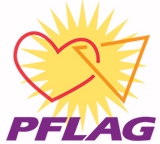Art is Free
 This week is conference week at my children's school. I did not expect to get a glowing report on either child, though they are both exceptionally bright. Yes, I know every parent thinks that their progeny is the next Steven Hawking, but I actually have documentation to substantiate my claim. And yes, that sounds just as pretentious when I say it out loud.
This week is conference week at my children's school. I did not expect to get a glowing report on either child, though they are both exceptionally bright. Yes, I know every parent thinks that their progeny is the next Steven Hawking, but I actually have documentation to substantiate my claim. And yes, that sounds just as pretentious when I say it out loud. But my children think "outside the box". They learn and process through experimentation, manipulation and sensory stimulation. They are both extremely creative and hunger for visual and tactile sustenance. Public school does not know what to do with my children, and so, they are compartmentalized within the very narrow definition of "gifted" and farmed out a couple days a week to harried accelerated learning specialists who have too many students and not enough resources. The rest of the time, they must fend for themselves; technicolor thinkers in a black and white world.
During my second grader's conference, the very timeworn issue of "lack of focus" came up, as it always does. The teacher, who is actually exceptionally well suited to her job and infinitely more patient with my child than I am, slid a worksheet accross the table with lips pursed and waited expectantly for me to comment. The front of the sheet you see, was utterly pristine. There was not one pencil mark upon it. The back however, was completely covered in graphite...a riot of shapes and shading that upon closer insepction revealed a very detailed and richly embellished medieval battle scene. This is how my darling 7 year old spent the morning, while his classmates dilligently filled in the blanks on their worksheets. The problem then was not lack of focus, but that which my son chose to focus on. My children have art instruction once a week, and obviously, this is not enough to slake my child's thirst. He was simply seeking another outlet for his creative energy, worksheets be damned.
Anyway, it was quite clear that she expected me to be as outraged by this as she was. Try as I might, I simply could not summon the kind of indignation that I knew any conscientious mother would should be feeling. Here is why:
Since the dawn of time, man has used the arts to communicate, to create a tapestry of the human experience, and to give meaning to his existence. In the ancient world, a civilization possessed of a strong artistic culture was thought to have a citizenry superior in intellect and inventiveness.
Unfortunately, as our world becomes more technologically oriented, with great scientific advances and medical marvels, emphasis on and interest in the arts has waned to the point of being deemed almost inconsequential. Sadly, only 36% of American students receive the recommended minimum of one hour per week of art instruction, despite the fact that the benefits of arts education are well documented.
Numerous studies have shown that a comprehensive arts education helps children:
- Learn more effectively in all areas of the school curriculum, including math and science.
- Experience greater understanding of what they learn
- Score higher on all aspects of the SAT.
- Acheive higher levels of academic success in college.
According to research by Professor Shirley Brice Heath of Stanford University, young people who practice the arts are:
- Four times more likely to win an academic award>
- Eight times more likely to receive a community service award
- Three times more likely to win a school attendance award
- Four times more likely to participate in a math or science fair.
Public schools are failing our children. As funding becomes increasingly scarce, and more and more emphasis is placed on standardized testing, our children are becoming one dimensional and creatively stunted. Classroom learning is tailored to those who are "normal" or "average", and those who fall above or below that designation are left to swim against the current in the vain hope of making it to shore. They either dog paddle in place, placidy treading water and waiting for their peers to catch up, or they are dragged beneath the waves and held there while the rest of the school swims effortlessly by.
I joined the PTA despite my lack of joiner mentality and abhorrence of such things, to have a hand in changing this. On an individual level, I cannot address the ridiculous academic standards and uniform curriculum, but I can do something about the woeful lack of enrichment programs available. I submitted a proposal to the Administration for a parent led program that I had seen being used with great success at another area elementary school. The program is designed to achieve the following:
- To educate students about artistic techniques, as well as art history and theory in a fun and age appropriate manner.
- To foster a love of and appreciation for art.
- To facilitate creativity and self-expression.
- To encourage parent involvement.
 The program required a very minimal commitment of one hour once or twice a month in which a parent representative would choose an artist from a pre-established list for the applicable age group (2nd graders just don't get Kandinski and 5th graders are much too sophisticated for Pollack). The parent would give a short presentation about the artist's biographical information, as well as that regarding the artist’s medium, technique, and theoretical beliefs. Parents were encouraged to be as creative as they like in their presentations. They could dress as the featured artist; perhaps wear a beret or carry a palette and brush. They might speak with an accent or imitate a physical attribute. Following the presentation, the parent would lead the class in a related project, using what they had learned.
The program required a very minimal commitment of one hour once or twice a month in which a parent representative would choose an artist from a pre-established list for the applicable age group (2nd graders just don't get Kandinski and 5th graders are much too sophisticated for Pollack). The parent would give a short presentation about the artist's biographical information, as well as that regarding the artist’s medium, technique, and theoretical beliefs. Parents were encouraged to be as creative as they like in their presentations. They could dress as the featured artist; perhaps wear a beret or carry a palette and brush. They might speak with an accent or imitate a physical attribute. Following the presentation, the parent would lead the class in a related project, using what they had learned. The Administration approved my proposal and expressed excitement about the program. I went forward; incredibly energized and full of altruistic vigor. My enthusiasm was short lived however. Despite relentless promotion of the program and shameless solicitation for volunteers at every possible school function, only ten classes out of 65 yielded a willing parent. That's barely 15% participation in a school of over 1200. The program was shelved due to lack of interest. It was bitterly disappointing and in my opinion, shamefully shortsighted.
Parents, wake up. Other developed nations are surpassing us at every level of education. Their children are more well-rounded, more intuitive, more able to compete in a global marketplace because they are provided with artistic, literary, musical and theatrical instruction as part of their everyday curriculum. If we don't take a page from their book, our kids will soon be absent from the pages of history.
If we cut physical education programs, our kids get fat. If we cut enrichment programs, our kids get flat. It's really very simple.


(Yes, I got a bit long winded. Forgive me. It's one of my passions and it's important.)









2 Comments:
At 9:11 AM, Mom101 said…
Mom101 said…
AMEN!!!
At 1:12 PM, Anonymous said…
Anonymous said…
I second that.
Post a Comment
<< Home